Analyzing Pigments in the Book of the Dead Using XRF Spectroscopy
One of the many scientific analytical techniques used in art conservation is called X-ray Fluorescence Spectroscopy, or XRF. The Paper Conservation Lab here at the Brooklyn Museum is using this technique to study the Brooklyn Museum’s Book of the Dead of the Goldworker of Amun, Sobekmose papyrus scroll.

Fragment from Book of the Dead of the Goldworker of Amun, Sobekmose. Egypt, from Saqqara. New Kingdom, Dynasty 18, probably reign of Thutmose III to reign of Amunhotep II (circa 1479–1400 B.C.E.). Papyrus, ink, pigment, 14 x 288 2/3 in. (35.6 x 733.2 cm). Brooklyn Museum, Charles Edwin Wilbour Fund, 37.1777E
XRF is used to identify most elements with an atomic number on the periodic table equal to or greater than Aluminum. Most importantly, the technique can be used without any harm to, or even contact with the art object. For these reasons, art conservators use the technique to help them identify what elements are present in a targeted area of an object.

XRF uses x-rays to determine the area in question. The spectra that are captured during each reading show peaks representing the x-ray’s energies for each element present.This image is an example of the spectra provided by XRF. The characteristic peaks identify the elements and the height of the peaks can determine the quantity of each material present compared to other elements.
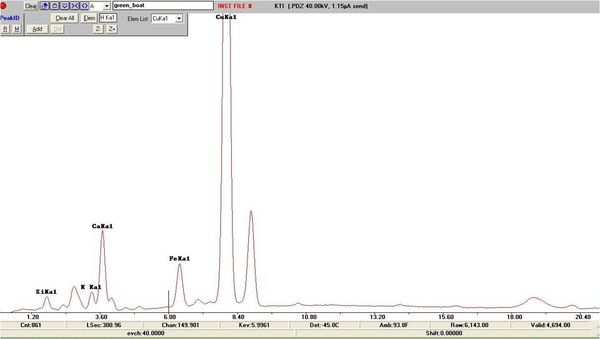
In the case of this papyrus scroll, we wanted to come to a better understanding of what inks the ancient Egyptian scribe used to write the spells for this Book of the Dead, and what pigments he used to illustrate it.

Fortunately for us, Eleonora del Federico, Associate Professor of Chemistry in the Math and Sciences Department at Pratt Institute, along with many of her students, also has a keen interest in studying papyrus and ancient Egyptian pigments. Her department has a portable XRF device, which they brought to our paper lab on several occasions in order to perform the analysis with us.
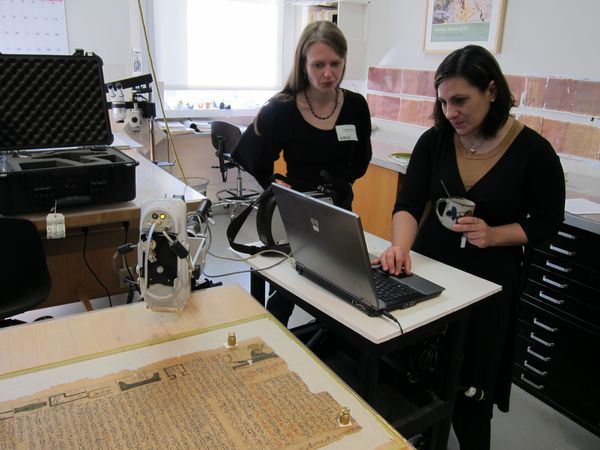
This is what Pratt’s portable XRF device looks like. Here is it seen mounted to a tripod and positioned just a few millimeters over the pigment we want to analyze. When the device is turned on, x-rays are emitted from a tiny tube and directed towards the object. These x-rays are capable of measuring an area just a few microns in diameter.
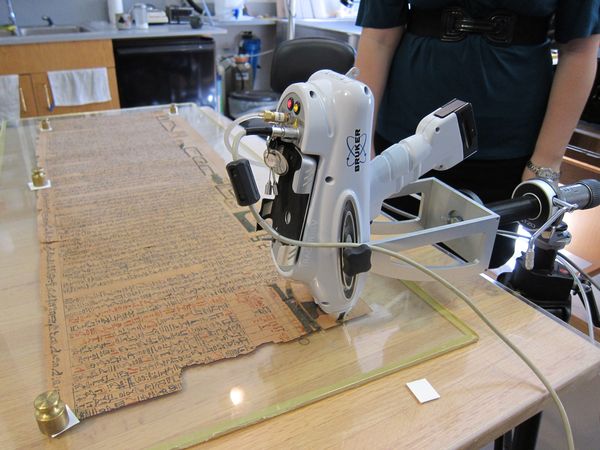
The first scan we did was on an area of red pigment in the vignette towards the right edge of the papyrus fragment (see arrow).
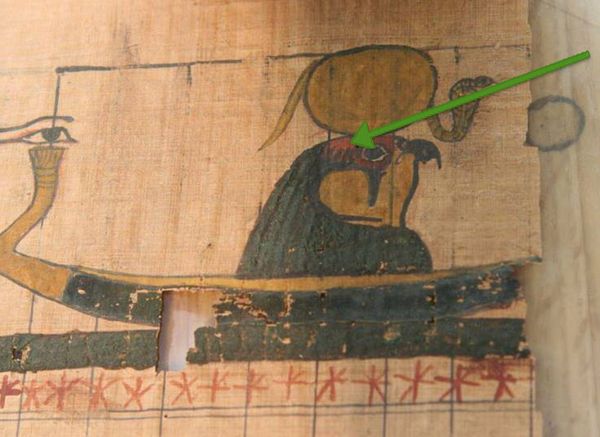
The XRF was positioned over the object and after a few minutes enough data was gathered for interpretation.
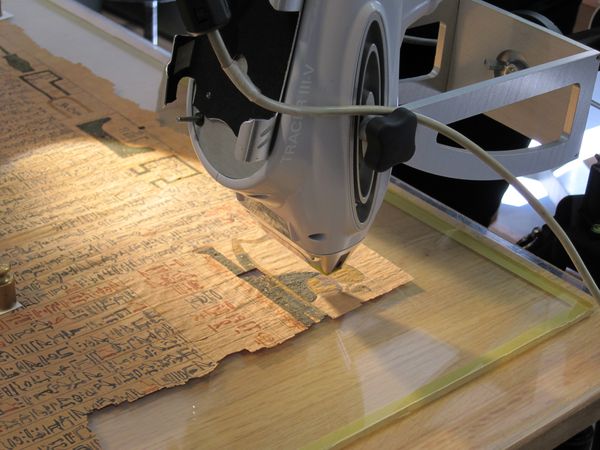
The results show a large peak of iron, which suggests that the pigment is an iron-based pigment such as red iron oxide.
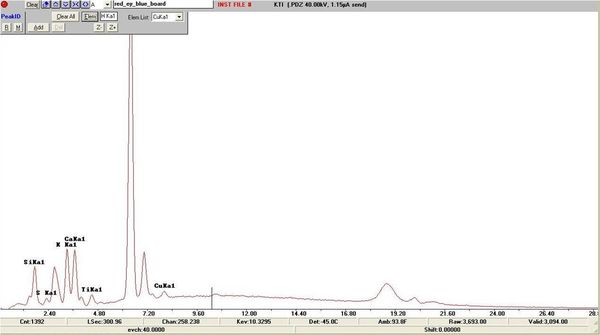
We repeated this process several times in other areas on this fragment and the following pigments were indicated:
Red – red ochre
Yellow – yellow ochre
Green – malachite
Blue – Egyptian blue
Black – carbon black
These findings are consistent with the pigments that we know were available and often used by the Ancient Egyptians (see previous blog, Pigments and Inks Typically Used in Papyrus).
—-
This post is part of a series by Conservators and Curators on papyrus and in particular the Book of the Dead of the Goldworker of Amun, Sebekmose, a 24 foot long papyrus in the Brooklyn Museum’s collection. This unique papyrus currently in 8 large sections has never been exhibited due to condition. Thanks to a generous grant from the Leon Levy Foundation, the entire papyrus is now undergoing conservation treatment. The conservation work is expected to last until fall 2011 when all 8 sections will be exhibited together for the first time in the Mummy Chamber. As each section is conserved, it will join those already on exhibition until eventually the public will see the Book of the Dead in its entirety.

Caitlin Jenkins is currently the Andrew W. Mellon Fellow in Paper Conservation at the Brooklyn Museum. She received her M.A. in Art Conservation from Buffalo State College in NY and before coming to the museum she held positions and completed internships in a variety of other conservation labs at institutions including the National Gallery of Art in Washington, D.C., the Northeast Document Conservation Center in Andover, MA, the Ackland Art Museum in Chapel Hill, NC and the Wilson Library, also in Chapel Hill. She received B.A.s in Art History and in Historic Preservation from Mary Washington College.
